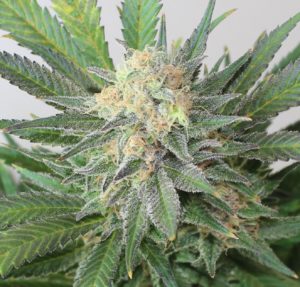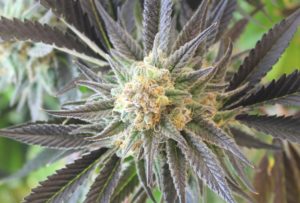
One of the many benefits dispensaries offers their patients is the ability to choose specific strains from a large selection of products. Patients appreciate knowing what they’re buying and take comfort in the fact that the products on the shelf are cultivated specifically for medical use and lab tested for safety and potency.
But then comes the hard part…how do you know which product is right for you when you’re facing down a dispensary menu with a dozen or more different strains to choose from? It’s a challenge that can freeze even the most experienced cannabis consumer in their tracks. Fortunately, cannabis science offers us a helpful roadmap for navigating this tricky terrain and making informed decisions at the dispensary counter.
Sativa, Indica, and Hybrid Strains
The first thing you’ll notice about most medical cannabis menus is that they’re often organized into Sativa, Indica, and hybrid categories. Here’s an overview of these commonly used terms:
Indica strains tend to provide a physical effect, which can be felt throughout the body. These strains are commonly used for reducing pain, relieving muscle tension, increasing relaxation, and helping patients rest. Indica strains are often recommended for nighttime use because many patients find them helpful for promoting sleep.
Sativa strains tend to produce a more cerebral effect, which impacts mood and emotion. These strains are popular for increasing energy levels, improving focus, and combatting depression. Sativa strains are often recommended for daytime use because many patients find them helpful for providing symptom relief without interfering with daily activities.
Hybrid strains are varieties that contain similar levels of Indica and Sativa. These “best of both worlds” strains offer a balance between the benefits of both types.
It’s important to understand that these categories aren’t written in stone, but rather offer general guidance based on our experience with the product. They offer a useful reference point for patients seeking a particular experience, but patients often find noticeable differences between strains even within these categories. As we note below, factors such as cannabinoid and terpene content may offer more specific clues towards how an individual strain may affect you.
THC Isn’t the Whole Story
The cannabis plant’s best-known component is THC, an important cannabinoid that plays a prominent role in stimulating both the psychoactive and medicinal effects of the flower. For this reason, medical cannabis is tested for THC content and patients sometimes regard THC levels as the beginning and end of any conversation regarding the quality of an individual flower. The reality, however, is more interesting and advantageous to patients willing to look beyond THC content alone in their quest to discover the best medicine for their needs.
While it’s true that relative THC content does provide some guidance towards anticipating the strength of a given flower’s effect, it doesn’t tell you the whole story. THC is just one of several dozen cannabinoids commonly occurring in the cannabis plant, which collectively impacts its mental and physical effects. CBD-rich cannabis, for example, is rapidly rising in popularity as a treatment for anxiety, seizures, and inflammation, yet lacks the psychoactive effects of THC. Patients seeking symptom relief paired with milder cerebral effects may find that elevated CBD levels are an important indication that a strain will work well for them.
Other common cannabinoids include CBN, which may treat pain and insomnia, and THCv, which may have neuroprotective properties. Many other cannabinoids can be found in varying percentages within specific strains and we expect that continuing research will yield new treatment applications for cannabinoid components whose potential remains to be fully understood. Paying attention to the cannabinoid content of the strains you sample will you identify what works best and may help guide future purchasing decisions.

Following Your Nose
Modern cannabis genetics exhibit an almost impossible array of aromas, ranging from sugary sweet citrus to pungent diesel fuel. What many don’t realize is that the smell an individual flower release is actually an important clue towards anticipating its effects. These distinctive aromas are created by terpenes, a wide-ranging group of oils produced by the cannabis plant that determine the smell of an individual strain. Like cannabinoids, the terpene content of an individual strain impacts its effects, but with the added benefit of being detectable through flavor and aroma. For example, strains that smell strongly of lemon and pine are exhibiting the terpenes Limonene and Pinene. This tells you that the flower is likely to have more energizing, Sativa-dominant effects. In contrast, strains with a musky and earthy aroma may be rich in the terpene Myrcene, which is associated with more sedative Indica-dominant effects.
Understanding terpenes can vastly enhance your ability to identify strains with particular attributes, but it takes time and experience to become familiar with the incredible variety of terpene combinations cannabis can express. Cross-breeding often results in multiple rich aromas co-existing within individual strains. For patients, it’s important to pay close attention to the aroma and flavor of the strains you sample, which will help you develop a stronger instinct for predicting the experience you’re seeking. You may also want to take advantage of resources like Leafly.com which provide information on the terpene profiles of popular strains.
What’s in a Name?
Although it is the cannabinoid and terpene profiles that truly determine the unique characteristics of individual varieties, strain names serve as an important reference point on the vast map of modern cannabis genetics. Becoming familiar with the most common strains and educating yourself about your preferred genetics will help steer you towards products that work for you and away from those that don’t. Product names often include valuable clues you’ll want to pay attention to. For example, anything with “Purple” in its name will likely have a more sedative effect, while “Haze” suggests a more energizing experience. Making notes of what you like and sharing that information at the counter will help us customize our recommendations. Learning the history of your favorites will also help you discover other strains with similar qualities.
Conclusion
Ultimately, the factors that determine which product will best meet your needs are determined by both your individual symptoms and the unique characteristics of the strain you select to treat them. The diversity of the dispensary menu is designed to provide a range of selections even within specific categories like Indica or Sativa, enabling patients to explore options and customize their treatment plans. As always, our staff will be eager to assist and share their knowledge to help you find what you’re looking for.
